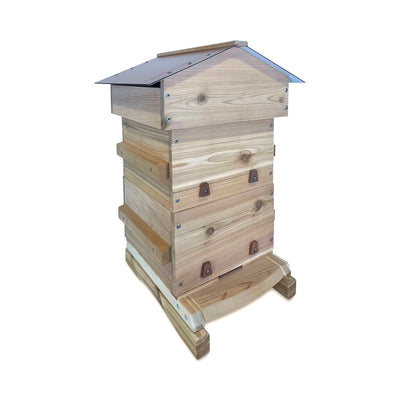Designing the Perfect Birdhouse
There are infinite models of birdhouses on the market these days, but very few are researched and designed with the birds’ needs in mind. We did the leg work! The development of our Cedar Songbird House began just like our other pollinator homes: by asking questions. What does this creature’s natural habitat look like? What size does this species become when it’s wings are extended? What behaviors does this species exhibit that we can accommodate? And finally, how do we design something this species will be attracted to while also adding beauty and charm to backyards and gardens?
 By the end of our research and design we came up with an attractive, innovative bird house that will keep your songbirds singing. And of course, we used the highest quality materials available, including Western Red Cedar that is precision-milled right here in the Pacific Northwest.
By the end of our research and design we came up with an attractive, innovative bird house that will keep your songbirds singing. And of course, we used the highest quality materials available, including Western Red Cedar that is precision-milled right here in the Pacific Northwest.
Below are the top five aspects we considered while designing our bird house. Bird Thinking, anyone?
1. Keeping Birds Dry
In the Winter, birds can face some seriously cold and wet months, depending on where you live. Don’t let your bird house turn into a swimming pool! Our bird houses utilize sloped roofs to support water runoff, along with a recessed floor inside to wick water out of the nest.
2. Temperature Regulation
Our cedar walls that measure ¾” thick provide optimal insulation of the nest, especially accompanied by four ⅜” ventilation holes to assist with proper airflow.

3. Keeping Out Predators
Sure, perches have become a classic component of most birdhouses, but they actually tend to attract more predators by giving them a convenient landing spot! For this reason, our birdhouses are perch-less, and also have keyhole notches on the back for you to securely hang the house out of reach of ground predators.
4. Entrance Hole Size
Our Cedar Songbird Houses are built to specifically accommodate chickadees, wrens, nuthatches, and swallows. These birds thrive with an entrance hole ranging from 1 ⅛” to 1 ½” in diameter. Our bird house also comes with an optional, poplar fitted entrance reducer for adjusting the entrance hole size for the birds in your region.
5. Rough Interior Walls for Climbing
The inner wall below the entrance is sanded down and has shallow grooves in the wood to help fledglings climb out of the nest.
There you have it: Five species-first considerations we made when designing and building our beautiful and effective Cedar Songbird Houses. Be sure to check back soon so you don’t miss out on what comes out of our workshop next!





Leave a comment